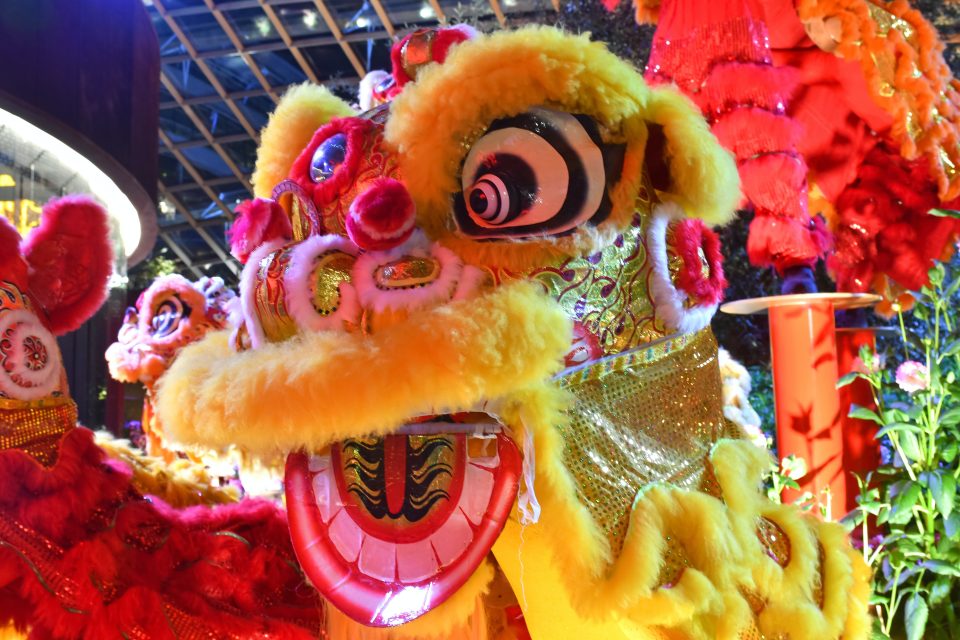It was not until last 2014 I really fathom what Chinese New Year was like until one of my Chinese-Indonesian friends invited me to join and have a look at the celebration in Padang.
As I paid him a visit, I saw the Chinese New Year celebration is not much different from the way Eid Fitr’ festivity is celebrated. It is marked by new-year visits to kin, relatives, and friends. Everyone wears new clothes to signify a new year and most in various shades of red. To the Chinese, red is the emblem of joy and symbolises virtue, truth, and sincerity.
The Chinese New Year began with the reunion dinner on the eve of the New Year. It is a time when everybody in the family comes home to celebrate the New Year. What I find interesting in this Lunar New Year celebration, particularly in Padang, is that it is a public festivity. Even Padang municipality and residents enjoyed and met their previous curiosity about this event. Chinese-Indonesians no longer celebrated their new year out of public sight and behind closed doors.
People will freely see, for instance, that the lion dance troop went to all residential areas and everyone tagged along until they have gone to all the houses in that area. I remember that I saw many people hanging an ang pao from the second-floor house and watched excitedly as the lion climbed up to take the ang pao — the red packet as a gift from the elder to the young.
To a serious degree, such a festivity really was down-to-earth intermingles between Chinese-Indonesians and other ethnic groups in this archipelago. It represented minority cultural revival.
More and more Chinese-Indonesians candidly name themselves “Tionghoa” people in spite of the fact they stem from various tribes such as Hokkien, Hokchia, Teochew, Hakka (Ge), Kanton, or Mandarin. This awareness comes to force as they call themselves the people of Tri Dharma (especially Confucian) and replace their religion in their ID cards with Confucian.
Any Chinese-related stuff is common despite Chinese characters just appearing sporadically, unlike in Malaysia and Singapore. What is happening with Chinese-Indonesians is quite similar to upraising ethnic Cornish in South West England. The Cornish explored every avenue to restore the Cornish language which has disappeared for two centuries. They succeeded as the Cornish language was eventually recognised to be one of the local languages in the United Kingdom.
Revitalising Chinese culture in Indonesia is different from what took place in Malaysia on the strength of dividedly sociopolitical circumstances and various Indonesian identities Chinese-Indonesians encountered. But one for sure, they can be much more nationalistic than indigenous people. That many of them still maintain an affinity with China has more to do with their respect for their cultural roots than anything else. However, they have more in common with most of us here than with their ancestors in mainland China.
At my college and schools in my town, I admit how Chinese-Indonesian students interact with indigenous students and greet one another without disdain. Race-based friendship is no longer evident with Padangnese becoming their daily language instead of the Indonesian language. It is to some extent that the use of local language in daily conversation contributes to having ethnic conflicts boil down quite easily. Minority cultural revival, therefore, is not a menace to the country’s unity providing the genuine engagement of diversities is applied within bounds of civility.
We hope that the Chinese New Year celebration is not just an excuse to go shopping or travel, but a time for families of this nation to gather together to rekindle and strengthen their special bonds.
It is a good time for Chinese-Indonesians to indulge themselves and share so much good camaraderie with so many people. Allowing Chinese-Indonesians to celebrate their new year openly is a path of social cohesion in the country’s unwavering commitment to pluralism and tolerance.
Traditions of Chinese New Years vary greatly from family to family. While some are very strict, others are more relaxed. But the Chinese New Year is also a perfect time to hold open houses. Friends and family will come by the house, greet each other “Gong Xi Fa Cai“ as a way to foster closer ties with one another and ensure that the rest of the year is filled with strong friendships, good laughs, and happiness. Many homes also invite their non-Chinese friends and colleagues, opting for halal catering services so that their visitors will feel at ease.
We must remember that regardless of our lineage, we are all Indonesians and we share a common future. We all have a stake in making sure that the nation continues to prosper to ensure a better future for our children.
We extend our best wishes for the Chinese-Indonesians celebrating their new year. Gong Xi Fa Cai (wishing you prosperity), Sen Ti An Kang (wishing you good health), Ma Jing Shen (wishing you good spirit and good health), and Wan Shi Ru Yi (may your wish come true).
The writer is a lecturer in the Faculty of Humanities at Andalas University, Padang




